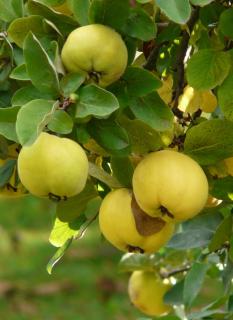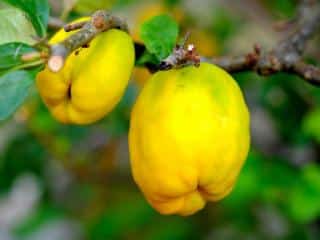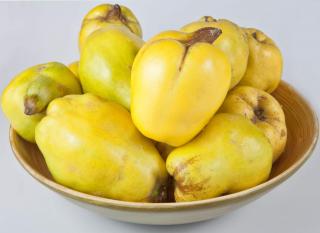

Quince tree is a very beautiful fruit tree, that bears nice fruits called quinces.
Key Quince facts, a short list
Name – Cydonia oblonga
Family – Rosaceae
Type – fruit tree
Height – 16 feet (5 m)
Exposure – full sun
Soil – rather rich, well drained
Foliage: deciduous – Flowering: spring – Harvest: fall
Care, pruning and planting must all follow good practices to increase the fruit formation.

You can also plant your quince tree in spring, as long as it is possible for you to water it often over the first summer following the planting.
It isn’t really necessary to prune quince, since it won’t really influence fruit-bearing.

Occasionally, you can cut entire branches short during the harvest if you know you’ll prune them off anyways. This makes it easier to pick the fruits since you can slowly bring the entire branch down.
Though it’s quite hardy and resists most diseases well, the quince tree sometimes falls victim to fungus infections. Rarely will these endanger the tree. Sadly, though, fruits are easily scarred or lost because of these:

But its small size, the beauty of its leaves and of its bearing, and the distinctive culinary quality of its fruits have brought it back into the spotlight, with good reason!
It is also a perfect fruit tree for countryside gardens.
Easy to grow and requiring practically no care, quince is slowly gaining more aficionados!
It will fit even in a small urban garden, or in the corner of a countryside house, anywhere the climate isn’t too harsh.
<!–silent
–>
When harvesting, only harvest those fruits that are very ripe on the tree, because once it is detached from the branch, it won’t mature anymore.
The fruits are rather fragile and must be handled carefully.
I like to buy a quence plant